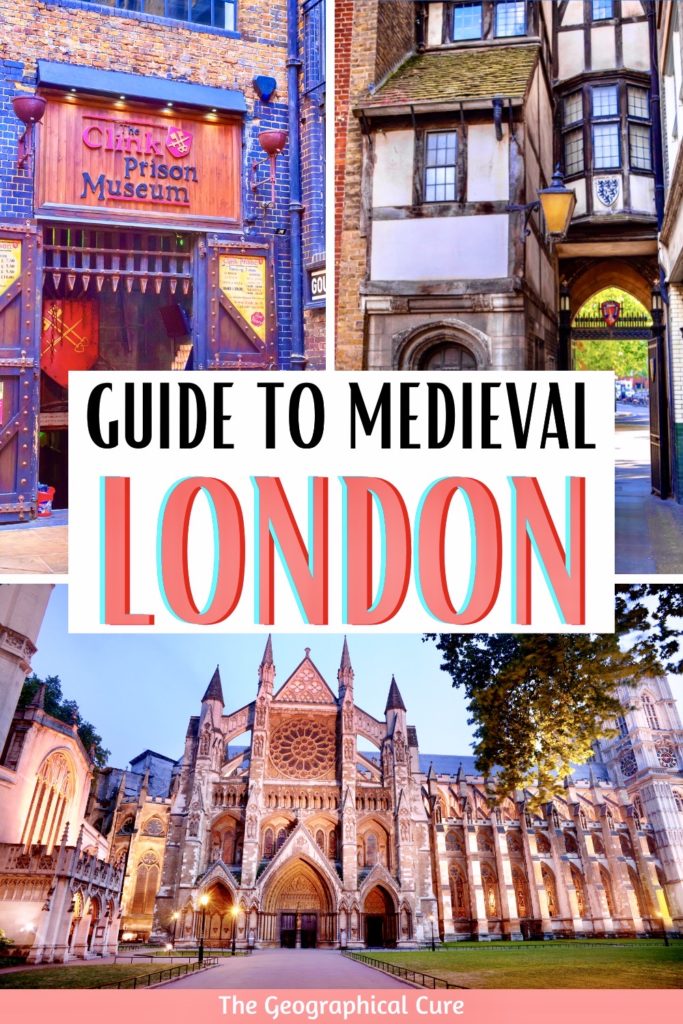This is the ultimate guide to immersing yourself in the many attractions of Medieval London.
Ah, this time period is one of the most romantic and exciting in English history. It’s full of stories about dynastic battles and fascinating casts of characters. The Middle Ages conjure images of knights on horseback, courtly love, and royal battles and scandals.
To be sure, all this romance came along with an unpalatable side. The Middle Ages was the time of plague, rats, terrifying fires, casual torture, and a poor living environment for most citizens.
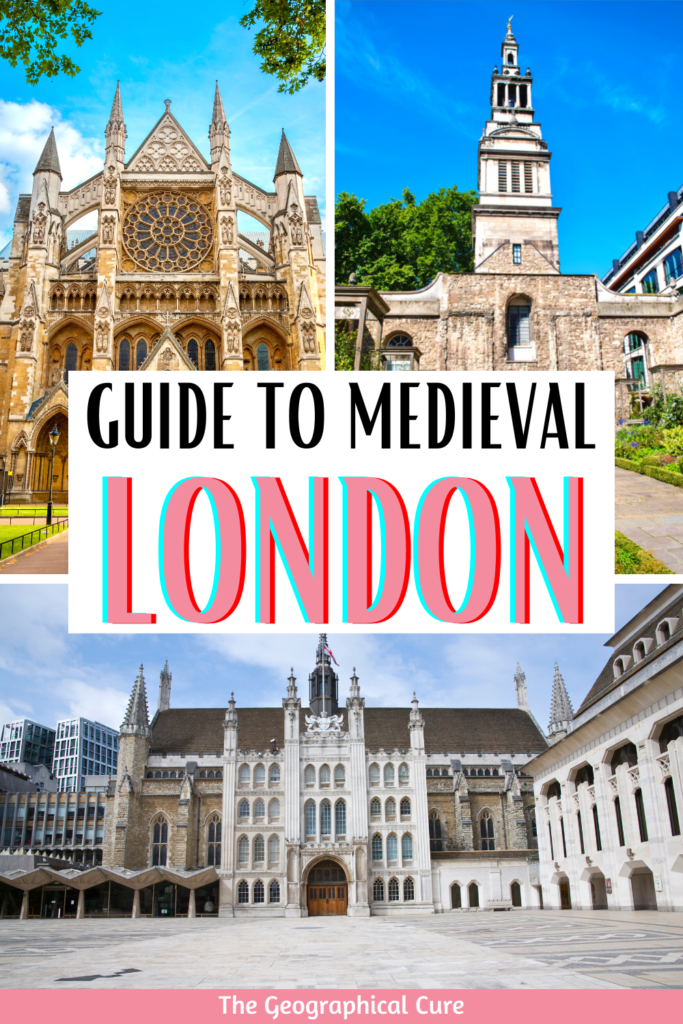
Still, the Middle Ages wasn’t exactly the bleak “dark ages” that Renaissance (or other) historians would have you believe. The Middle Ages saw advances in castle building, weaponry, agriculture, invention, and architecture. I mean, who doesn’t love Gothic architecture?
A Brief History Of Medieval London
Before we dive into the attractions of Medieval London, a mini history of this period is in order. If you already know the medieval goings ons in London, just scroll down.
Medieval London spans the period from 1066 to early 1500 or so. On October 14, 1066, William the Conquerer defeated the Anglo-Saxon king in the Battle of Hastings. It would be the last successful invasion of England.
William continued moving up the coast and then inland, building fortifications and dividing the kingdom into fiefdoms. The new territories were manned by loyalists who built fortified castles. These men would go on to become some of the most powerful magnates of the post-conquest era.
On Christmas Day, William was crowned king of a newly unified England in Westminster Abbey. In the years that followed, some of London’s most iconic medieval landmarks were built, including the Tower of London and Westminster Palace.
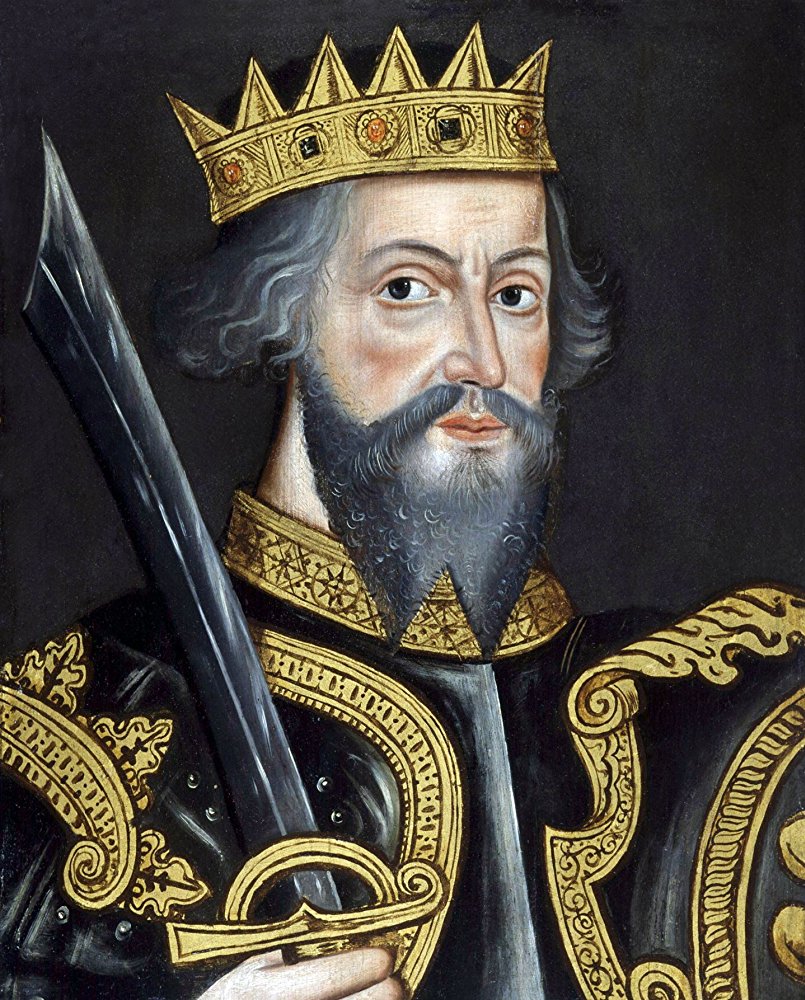
Williams sons Rufus and Henry were the next to inherit the throne. Henry I died with only one heir, Matilda, and 20 illegitimate heirs who were barred from succession.
Henry wanted Matilda on the throne. But the nobles found a women an unwelcome prospect and preferred Henry’s nephew, Stephen, the Count of Blois. Matilda clashed with Stephen in a civil war that lasted 14 years. However, when Stephen died without a male heir, she had her revenge when her son became Henry II.
He was the first great Plantagenet king, taking his name from his father Geoffrey of Anjou. Henry II was a powerful and brilliant ruler, one of the great kings of medieval Europe. He created the first English legal system.
He was married to Eleanor of Aquitaine, the former queen of France, who was his equal in every way. But after too many infidelities on his part, the marriage soured. Eleanor and their sons turned against him.
After beating his father Henry II on the battlefield, Richard I, known as “the Lionhearted,” became king. He was the archetype of a great Medieval warrior. He spent most of his life crusading and died without an heir, leaving his brother John “Lackland” in charge.
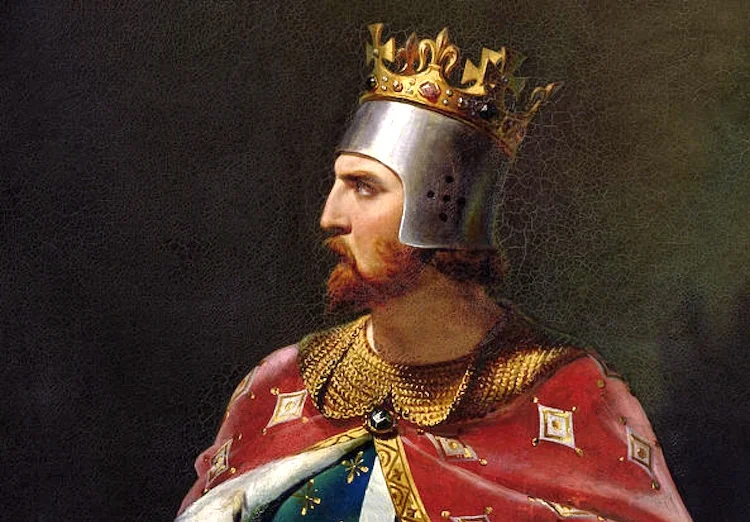
John was an imperious and unpopular ruler. He overstepped his authority and ended up being forced to sign the Magna Carta. This watershed document placed limits on royal power and became a cornerstone of English liberties.
Next in line for the throne was Henry III. He clashed with the barons, who were led by Simon de Montfort. Civil war broke out in 1264, but de Montfort was ultimately defeated.
Henry III’s son Edward became the next king. He was a formidable king and castle builder. Edward I is most known for subduing the Welsh and successfully waging war with Scottish lords William Wallace and Robert de Bruce.
Edward’s son, Edward II, was a hapless ruler. He didn’t marry well. His wife, Isabella the “She-Wolf” led a rebellion that resulted in his deposition.
His son, Henry III, was the opposite, one of the greatest of the medieval warrior kings. But during his reign, the Black Death killed off almost one third of England’s population.
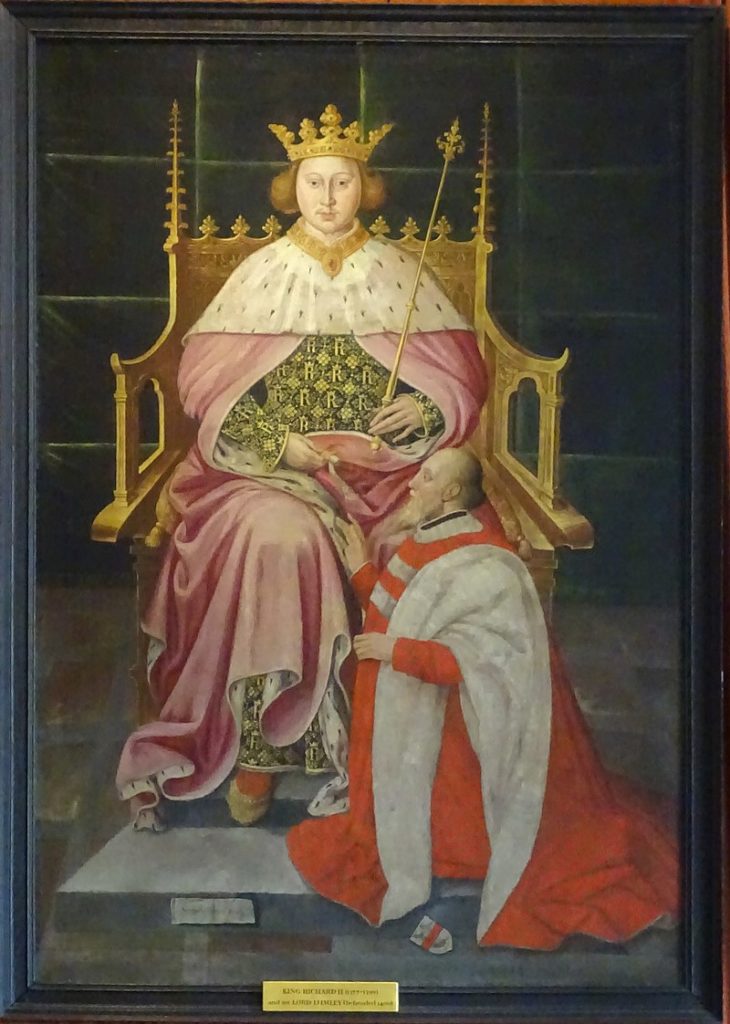
Richard II, Edward II’s grandson, was the next Plantagenet king. Taking the throne in 1377, he was an intellectual man with a cultured court.
But he was an ineffectual political ruler. His cousin Henry Bolingbroke, the Duke of Lancaster, swiftly deposed him.
Bolingbroke became Henry IV, and was a king who tried to restore law and order. His son Henry V had more success and was also a commanding war hero.
His son Henry VI’s long reign was the opposite, a disaster. The king suffered bouts of nervous breakdowns.
His weakness in navigating the vicious intrigues of the court kicked off the War of the Roses, the epic 30 year civil war (1455-1487) between the York and the Lancaster branches of the Plantagenet family.
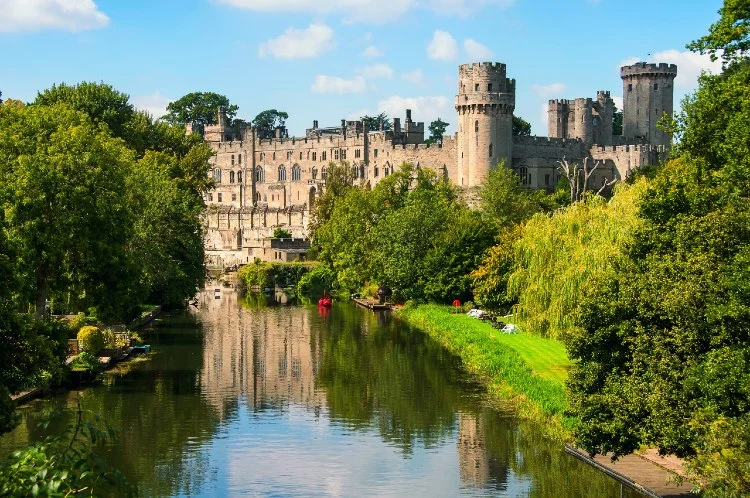
In 1455, Edward IV of York seized the throne. He survived a threat to the crown from the Earl of Warwick, the “Kingmaker.” He had two sons from a secret marriage to Elizabeth of York.
On Edward’s death, the princes’ uncle, Richard the Duke of Gloucester, took the princes to the Tower of London. Their legitimacy was questioned and they disappeared. What happened to them?
Many historians identify Richard as the culprit. He crowned himself king in 1483. But Richard III is a polarizing historical figure.
Based on Tudor propaganda and a motive of ambition, some think he’s the blood-stained hunchback of Thomas More’s history and Shakespeare’s play. Others think he was a skilled medieval ruler. (If you’re interested in the story, you can read my whodunit here.)
After a short reign, Richard III was killed in the Battle of Bosworth in 1485 by his rival rival Henry Tudor. That ended the War of the Roses and Henry VII became the first Tudor king of England. Henry married Elizabeth of York, thereby united the feuding factions.
Henry’s victory conventionally marks the end of the Middle Ages in England. But there is some blurring of that era into the Tudor era. So, I would be remiss not to mention the next monarch — Henry VIII, who inherited the throne in 1509.
Henry VIII is a larger-than-life colossus among English kings. He’s best known for his tumultuous marital life. His flurry of 6 wives gave rise to the slogan “divorced, beheaded, died, divorced, beheaded, survived.”
Henry’s first wife was Catherine of Aragon. When she failed to give him a male hair, the king’s roving eye landed on Anne Boleyn.
When the church wouldn’t give Henry an annulment from Catherine, Henry broke away from the Catholic Church. He installed himself as the head of the Church of England and married Anne. When she failed to give him a male heir too, it was off with her head.
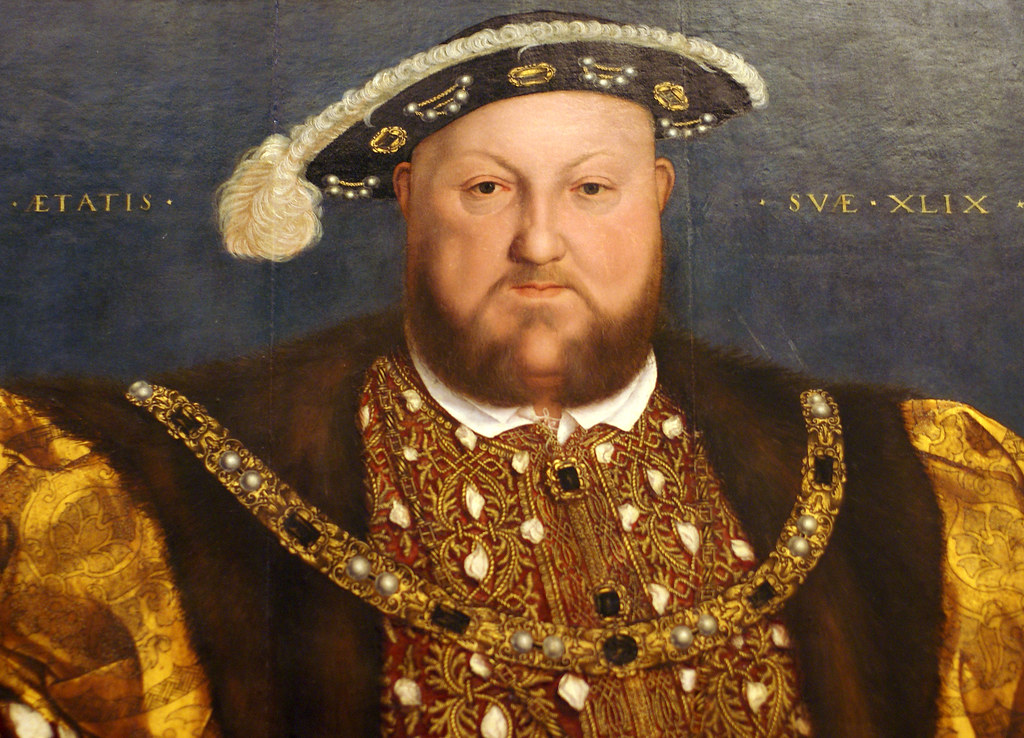
The Reformation was a watershed moment in English history. To confirm his position as head of the church, Henry ruthlessly dissolved over 800 monasteries and transferred their wealth to his coffers.
This ended a centuries old way of life. Many of London’s medieval buildings were torn down and replaced with gaudy mansions. The dissolution of the monasteries really marks the end of the history of Medieval London.
Guide To Medieval London: What To See
Now, for the good stuff. If you’re a history lover or medievalist like me, you’ll be happy to know that London is jam packed with remnants of medieval sites.
Let’s step back in time and take a tour of Medieval London. If this virtual tour inspires you to visit London’s medieval attractions, you can book a half day guided tour of medieval London to see them in real life.
For ease of reference, I’ve put my Medieval London list in alphabetical order.
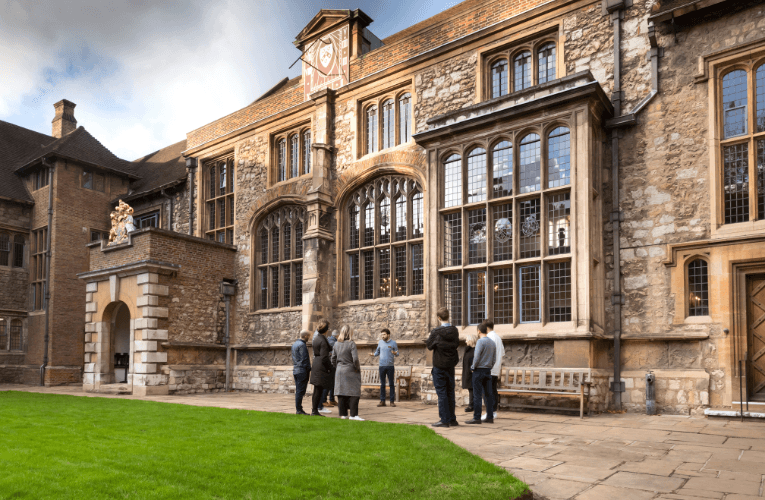
1. Charterhouse
The Charterhouse has a grim past as a plague pit. It was founded in 1171 as a medieval monastery of the Carthusian order for the purpose of praying for victims of the Black Death.
The site later became a grand Tudor mansion, a boys’ school, and an almshouse (which it remains to this day).
Charterhouse was home to some famous residents, including Thomas More and Thomas Cromwell. Both of these chief ministers got the chop from Henry VIII when the king no longer liked their policies.
In 1535, the Catholic friars of Charterhouse refused to recognize Henry VIII as the head of the Church of England. Revenge was swift, with four of the monks castrated, disemboweled, and hung to set an example to others who might defy the king.
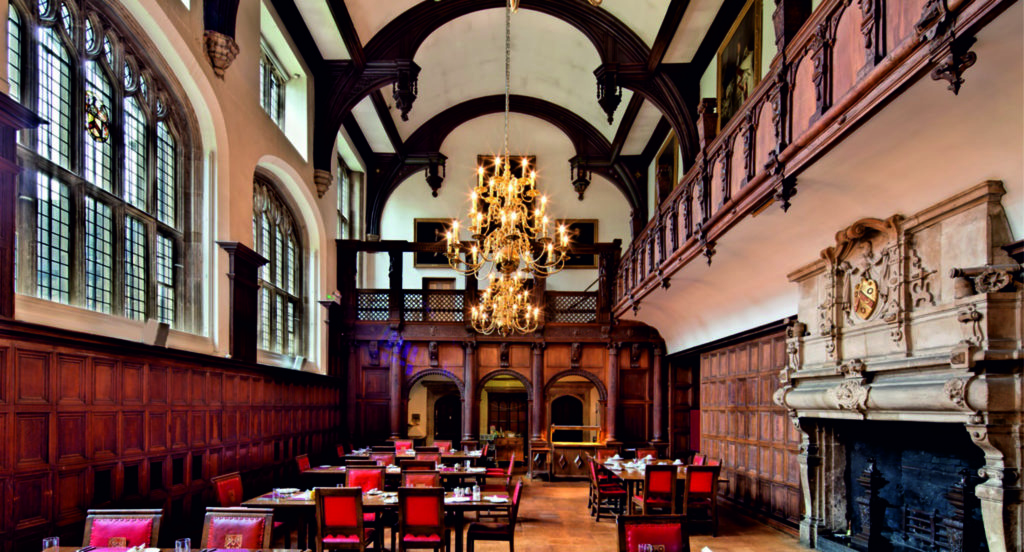
This didn’t stop the monks, however, so more of them were harshly punished.
Later, the Charterhouse was owned by several dukes (who also got the chop). In 1611, Thomas Sutton purchased the property and endowed it as a public school.
The Charterhouse opened as a museum in 2017. It’s still lived in by brothers of the cloth who provide guided tours of this magnificent building.
On a visit, you can see there restored Great Hall, the arcaded Norfolk Cloister, and the Great Chamber of James I.
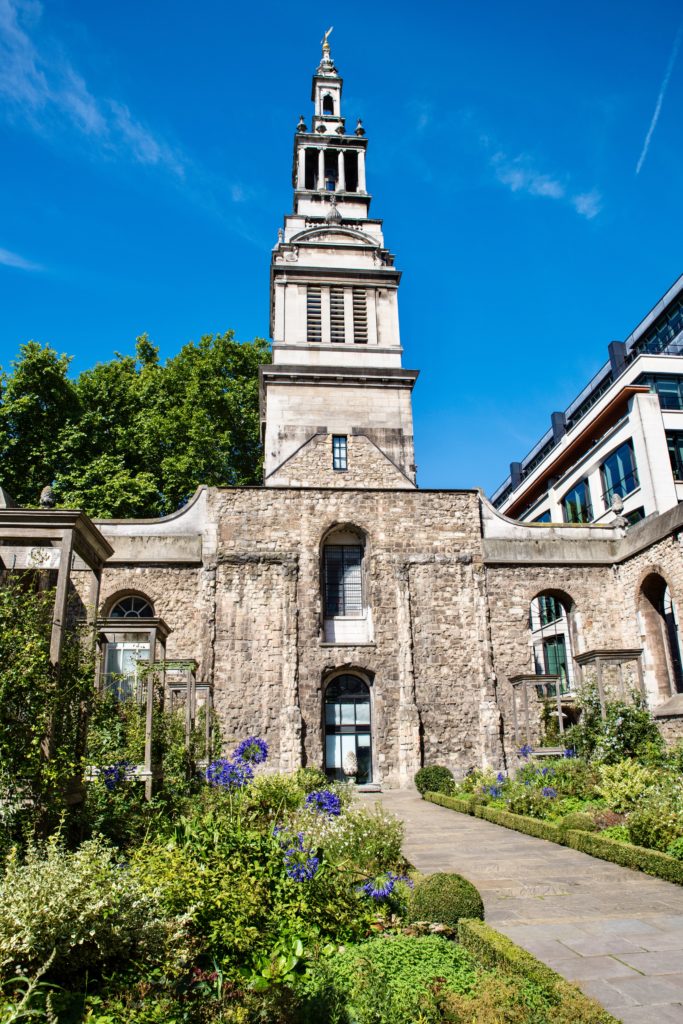
2. Christ Church Greyfriars
Greyfriars was once one of London’s loveliest churches.
Consecrated in 1306, the church marked a move away from somber churches to a lighter and more airy ecclesiastic architecture. It would have a huge influence on the development of the Perpendicular Gothic style.
During Henry VIII’s dissolution of the monasteries, Greyfriars survived. It was renamed Christ Church and became a parish church and, later, a hospital.
The Blitz in the WWII destroyed most of the church. The architect Christopher Wren rebuilt the tower. Today, you can visit and see the ruins set amid a pretty public garden with sculptures.
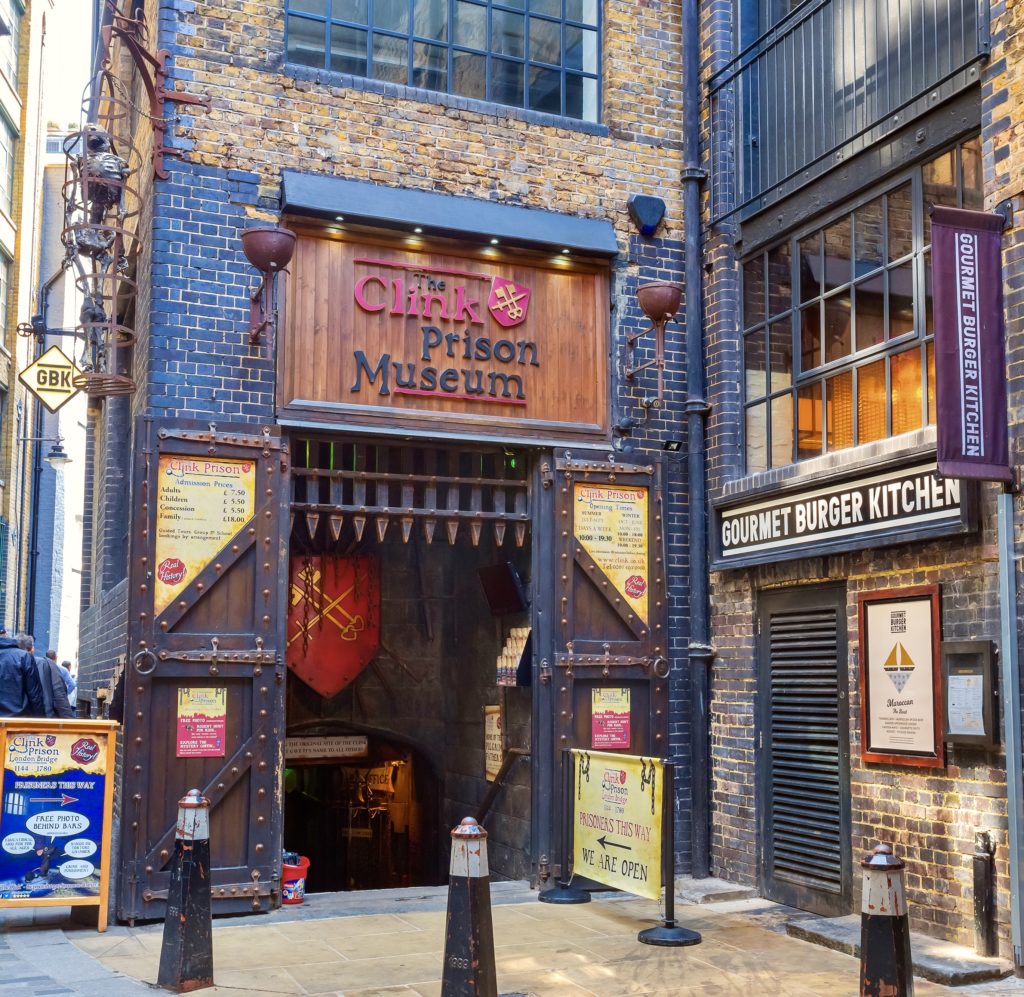
3. Clink Prison
The Clink Prison was a notorious prison operating in Medieval London’s Southwark neighborhood in the 12th century, known by the slang term “the clink.” It was the prison attached to Winchester Palace and operated from 1144 to 1780.
The Clink was mostly used to store religious malefactors. It was also one of the few London prisons to incarcerate prostitutes.
Today, the prison is a museum dedicated to its criminal past. You’ll see an exhibit on the “Ladies of the Night” and other prison memorabilia.
It’s really a bit of a tourist trap and expensive. But you can get the full scoop on a London’s crimes and punishments walking tour.
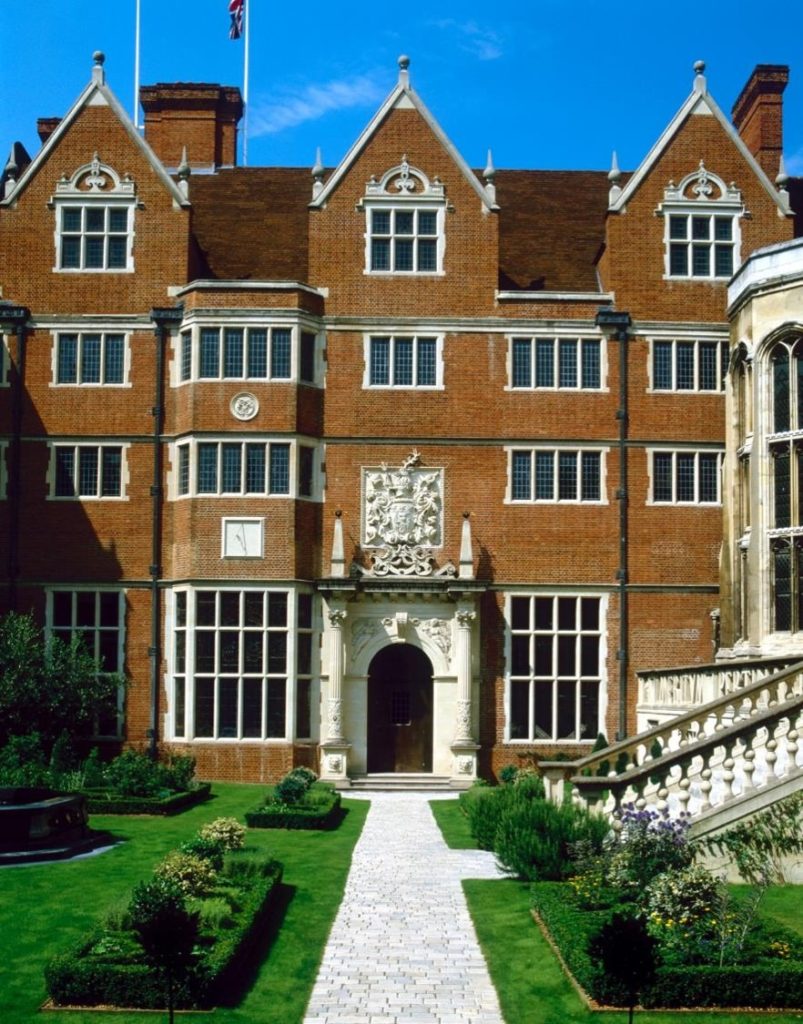
4. Crosby Moran Hall
Crosby Moran Hall is the most important domestic building from Medieval London. Today it’s privately owned by Christopher Moran.
In 1466, John Crosby purchased the home and set about enlarging and renovating it. Upon his death, the house came into the possession of Edward IV and became a favorite York residence of Richard III. The house is mentioned three times in Shakespeare’s play of the same name.
Ironically, Crosby Hall was later owned by Thomas More. He wrote an infamous biography of Richard III that helped launch his dreadful reputation as the murderer of the princes in the tower.
In 1907, the entire home was dissembled and moved to Chelsea.
The entrance looks a bit like Hampton Court Palace. The Great Hall has a striking hammer beam roof, oriel window, and minstrel’s gallery. You’ll also see a portrait of Thomas More and his family by Hans Holbein.
Right next door is Chelsea Old Church. Much of it was rebuilt after WWII damage. But the medieval chancel is intact. In fact, this is where Henry VIII and Jane Seymour (his third wife) were secretly married before their official state wedding.
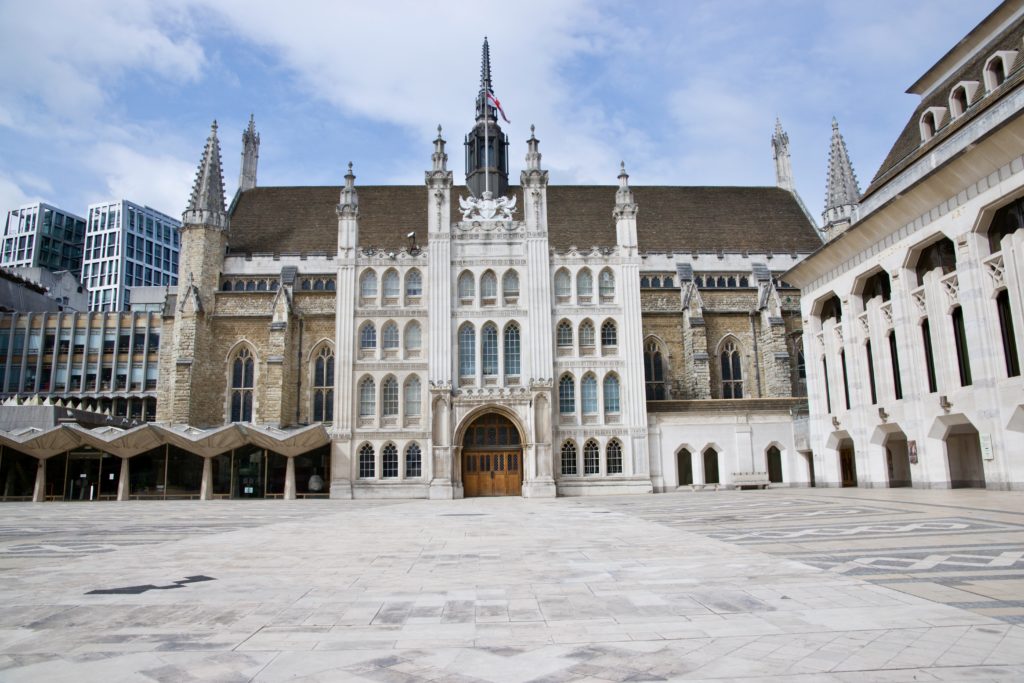
5. Guildhall
The Guildhall is a treasure trove for medieval enthusiasts, with a medieval crypt and great hall.
The Guildhall has been the heart of civic London since 1192. The building you see today was commissioned in 1411.
Inside, you can admire the 150 foot long Great Hall, which was (and is!) one the most splendid in London. For centuries, it was the site of grand affairs of state and criminal trials. It was here that the “Nine Days Queen,” Lady Jane Grey was sentenced to death for treason.
You’ll see colorful stained glass (not original) and statues of London dignitaries. Today, many state ceremonies and banquets are still held in the hall.
The vaulted medieval crypts are below the Great Hall. One dates from the 13th century and the other from the 15th century. The latter is supported by 6 columns of blue Purbeck marble and has a beautiful painted ceiling.
Check the website or call ahead to make sure the Guildhall is open. Sometimes, it closes on short notice.
Also, you can only visit on a guided tour and they are often booked many months in advance. For example, all tours are sold out for 2023 and booking for 2024 has begun.
6. Hampton Court Palace
Hampton Court Palace is just 13 miles from London, so I have included it in my list of Medieval London sites.
Hampton Court Palace is the world’s greatest surviving medieval palace. It has a deliciously rich and scandalous history and is filled with great art.
The palace was the favored playground and leisure complex of England’s infamous King Henry VIII and other notorious characters in English history.
Hampton Court Palace is really a tale of two palaces smooshed together. It’s a combination of the Gothic Palace of Cardinal Wolsey and Henry VIII and the Baroque Palace built later by the Stuart monarchs William and Mary. I’ll focus on the medieval bits.
Wolsey was the man to build the glamorous palace in 1514. When Henry VIII visited, he was disgruntled that Wolsey’s palace outshone his own.
Wolsey was forced to gift the palace to the king. It became Henry’s palace of choice and all six of his wives lived there with him.
With a serious nesting instinct, Henry further embellished the palace to make it “his own.” He commissioned countless murals, tapestries, and paintings.
The highlight of the interior is Henry’s Great Hall. It has a lavishly gilded hammerbeam roof, 60 feet high.
You can also admire Henry VIII’s State Apartments, the Wolsey Rooms, the Royal Chapel, the Renaissance Picture Gallery with paintings from the British Royal Collection, and the Tudor Kitchens.
Click here to book a skip the line entrance ticket to the palace. You can also book a 3 hour guided tour of the palace or visit on a guided day tour from London.
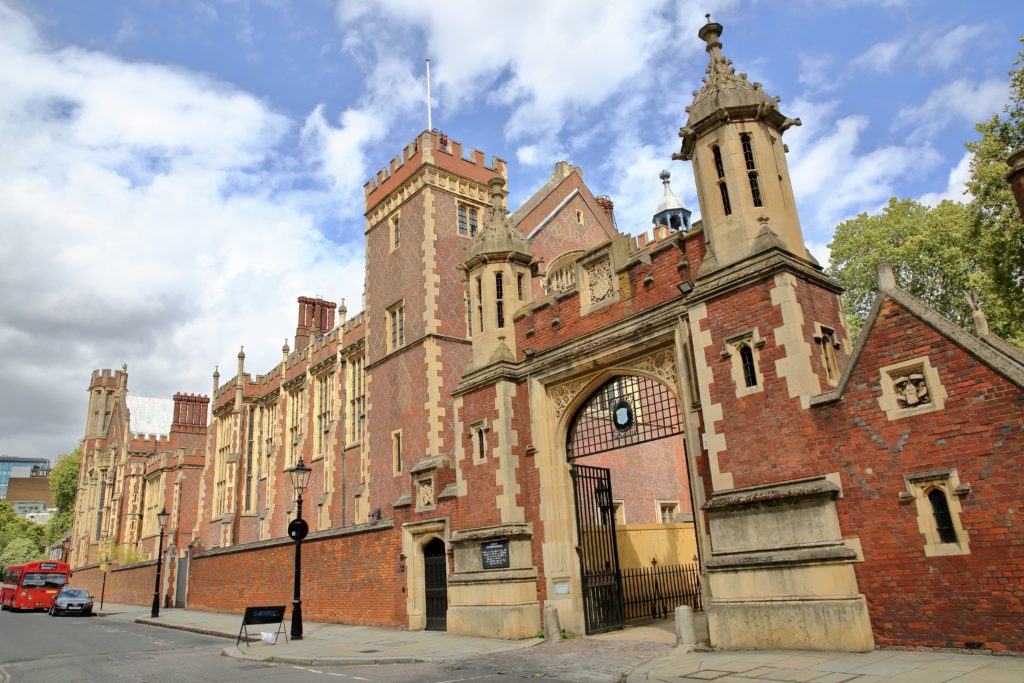
7. Inns of Court
London’s Inns of Court are oases of calm amid the hustle and bustle of the City’s legal heartland. The four Inns are Lincoln’s Inn, Inner Temple, Middle Temple, and Gray’s Inn.
They serve as England’s main law school and are all located in the vicinity of the Royal Courts of Justice. The inns also preserve some of London’s finest medieval architecture.
Lincoln’s Inn is the oldest and best preserved of the inns. Dating from 1485-92, the Great Hall is an authentic early Tudor residence. The stained glass windows depict coats of arms of distinguished members, including Thomas More.
The inn also has a “quad,” which likely served as the inspirations for the quads of America’s Ivy League colleges. From the quad, an ancient vaulted passageway leads to a beautiful collection of 16th century homes.
Middle Temple Hall In Middle Temple Inn is also a striking example of Tudor architecture. It’s considered the finest Elizabethan hall in England, with a signature hammerbeam roof. The stained glass is original, having been presciently removed during WWII.
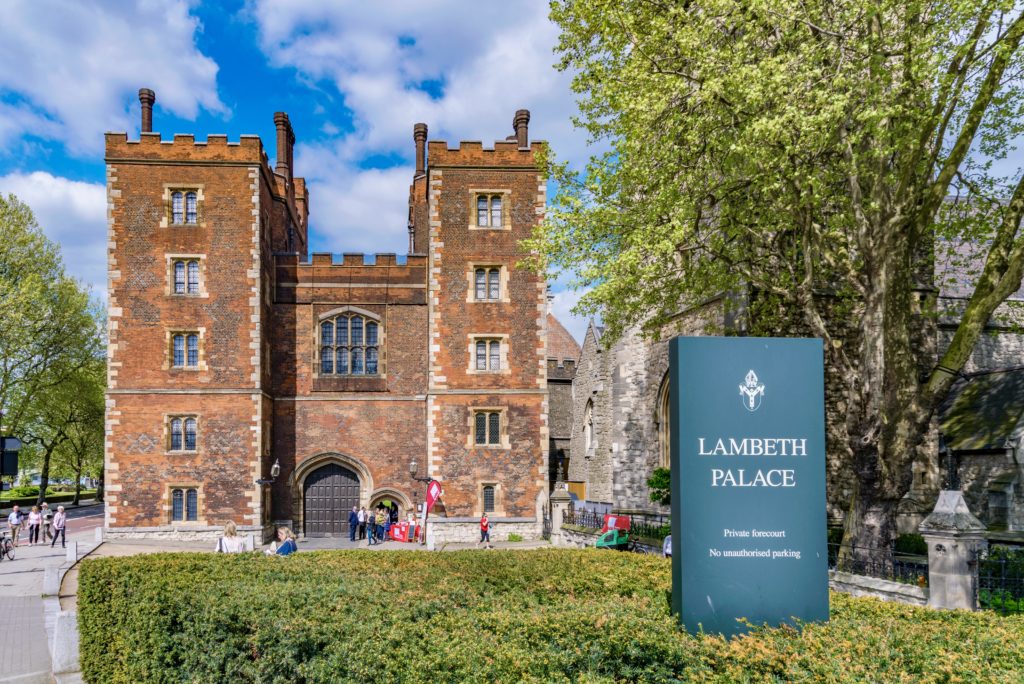
8. Lambeth Palace
Built in the 13th century, Lambeth Palace has been the official London residence of the Archbishop of Canterbury for 800 years. Today, it’s also an events venue and home to the Lambeth Palace Library, which is the world’s second largest religious library after the Vatican.
In medieval times, the archbishops zealously guarded the hegemony of the church against royal incursion.
The most impressive medieval part of the palace is Morton’s Tower, which you see in the photo above. Serving as the main entrance to the palace, it’s one of the finest examples of Tudor brick work in London.
The oldest part of the palace is the crypt, dating from the 13th century. Interestingly, this was where the official hearing ending Henry VIII’s marriage to Anne Boleyn was held.
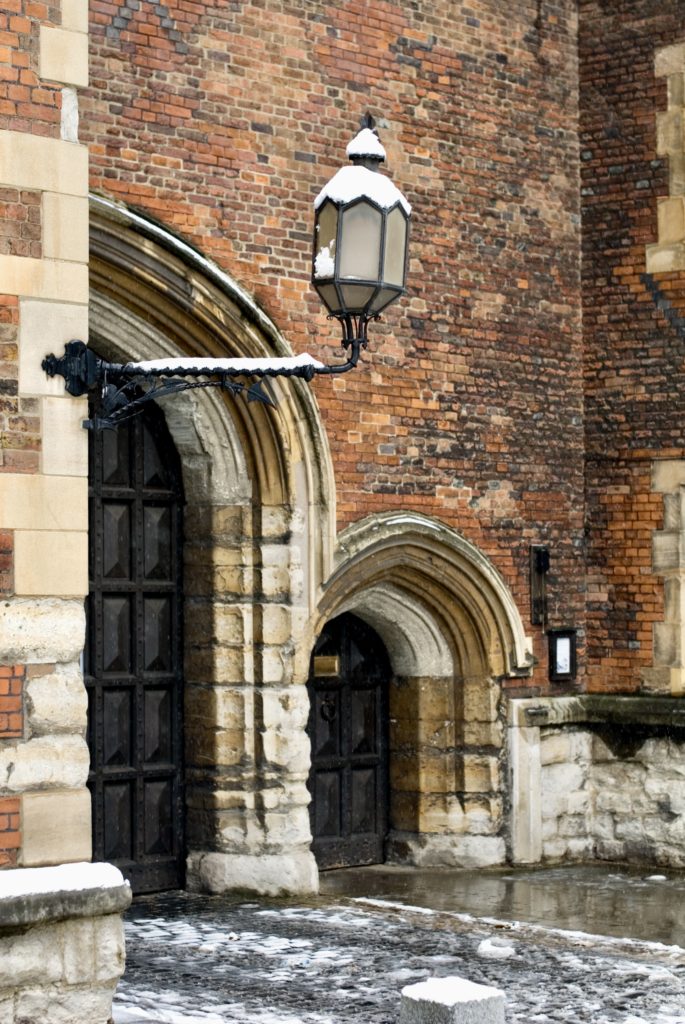
The Great Hall is a reconstruction of the medieval hall. You can almost imagine Henry VIII plotting with Thomas Cranmer over how to break from Rome and get his annulment from Catherine.
Today, the palace also houses a new purpose-built library, which has one of the world’s best collection of medieval manuscripts and books. Some items to look for are a Gutenberg Bible, the Lambeth Bible, and a Book of Hours that belonged to Richard III.
You can visit Lambeth Palace on a guided tour of Westminster. Click here to get information on joining a tour of the library.
9. Leadenhall Market
Leadenhall Market is an old covered market in central London dating back to 1449.
The market was originally a lead-roofed manor house, and that’s where Leadenhall got its name. In medieval times, the market was the mercantile district. It would have been a dirty and disgusting place where butchers slaughtered and cleaned meat.
In 1881, the city tore Leadenhall down and commissioned Sir Horace Jones to design and build the market that stands today. All that remains of the original is a fragment of a wall encased between Victorian buildings and some stones.
Today, it’s a busy place smack in the middle of the financial district. It has Victorian style architecture with a beautiful glass roof and cobbled floors. You’ll find market stands with everything from the basic to exotic to wildly extravagant.
10. Museums With Medieval Art
London is overflowing with some of the world’s best museums. And there are quite a few where you can immerse yourself in medieval art.
Museum of London
The Museum of London takes you on a journey of the history of London, from its prehistoric first settlers around 450,000 BC to today’s contemporary multicultural hub.
Two rooms are devoted to Medieval London.
Exhibits on display include a model of William the Conqueror’s White Tower, Norman battle axes, chain mail, costumes, and medieval carvings from the Guildhall.
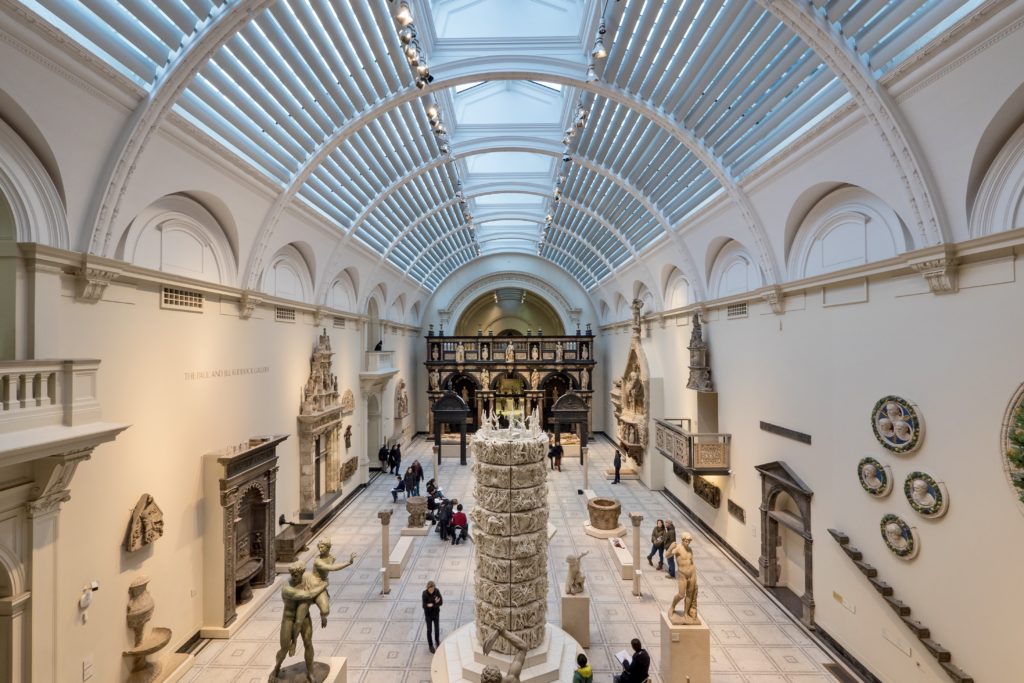
Victoria & Albert Museum
The Victoria & Albert Museum houses the world’s best collection of decorative arts, with a wealth of items from Medieval London that are too numerous to list.
But I will mention the Great Bed of Ware from 1590. It’s a 9 feet high four poster bed with elaborate carvings and inlays.
It was most likely made as a tourist attraction for an inn in Ware, Hertfordshire. The bed was so famous it was mentioned in Shakespeare’s play Twelfth Night.
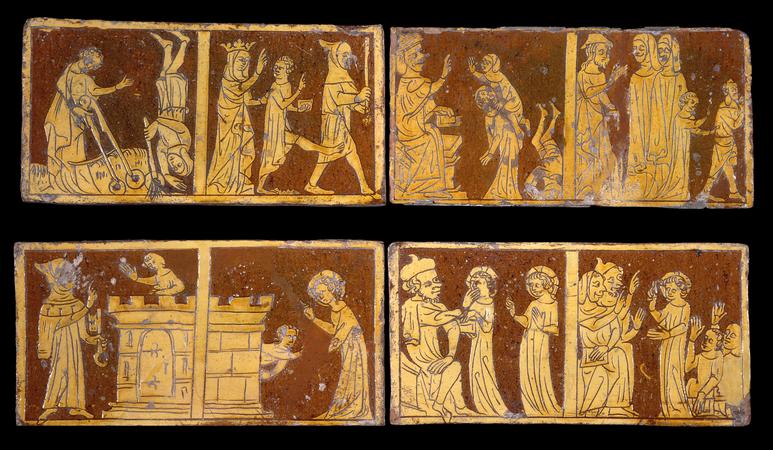
British Museum
The British Museum is almost overwhelming to visit, there’s so much to see. But for medievalists, the medieval art is conveniently stashed in one place — The Sir Paul and Lady Ruddock Gallery.
The gallery houses British, European, and Byzantine objects from the Middle Ages. The most famous work is the Lewis Chessmen.
The British Museum is free to visit. But if you want to see it all (not just he medieval pieces), you may want to book a 2 hour guided tour or a 2.5 hour private tour.
British Library
Just a few minutes from the British Museum, the British Library is also worth visiting for a taste of Medieval London.
You can visit the Treasures of the British Library Exhibition on a walk-in basis. you’ll find the Gutenberg Bible, the Magna Carta, the Lindisfarne Gospels, and Shakespeare’s first folio of plays. There’s also a splendid bookshop.
11. Shakespeare’s Globe
If you’re fascinated with playwright William Shakespeare, you’ll likely be taken with his namesake Globe Theater.
It’s a unique theatrical space that’s an epicenter of London history associated with the Bard. The original Tudor theater opened in 1599. Fire destroyed it in 1613. It was rebuild, but later demolished.
The reconstructed open air theater is a half-timbered and thatched roof reconstruction of the old theater where Shakespeare acted and directed.
It is an Elizabethan style theater in the round, hence the term “globe.” The theater’s debut play was Julius Caesar. Most of Shakespeare’s tragedies were specifically written for the Globe.
You can book guided tours of the Globe Theater complex. You can also book a Shakespeare-themed walking tour in London or a literary tour that includes the Globe and Charles Dickens House. The Globe is also free with the London Pass.
12. Southwark Cathedral
Though Southwark Cathedral is right next to the uber popular Borough Market, not many people pop in to this hidden gem in London.
Southwark Cathedral is a little Gothic wonder that dates back to 606 A.D. It is London’s oldest Gothic structure. The original site was destroyed by fire in 1212. It was rebuilt and dates from the 13th century.
The older Norman influences can be seen in the rear facade. The Gothic influences are on the front.
Inside, there’s an airy vaulted ceiling made of a sandstone colored brick. You’ll see some beautiful stained glass, a monument to Shakespeare, funereal tombs, and some quirky 15th century carved roof bosses.
Here’s my complete guide to visiting Southwark Cathedral. Entry to Southwark is free. You can also visit the cathedral on a guided walking tour of the South Bank.
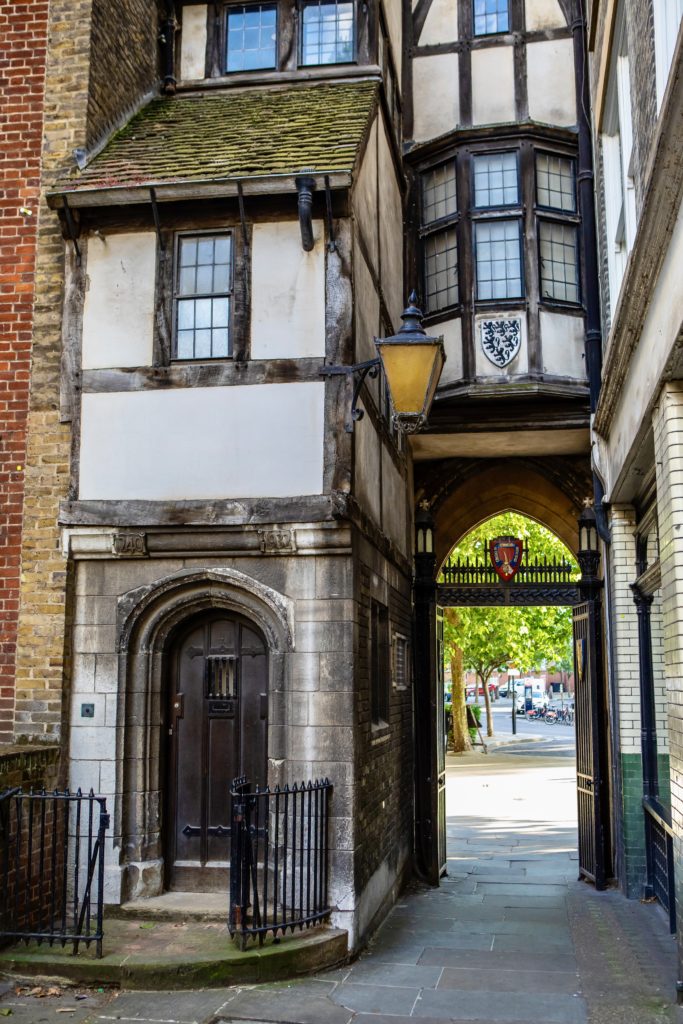
13. St. Bartholomew the Great Priority
St. Bartholomew the Great is the oldest surviving parish church in London and the most intact complete example of Norman architecture. When founded in 1123 by a courtier of King Henry I, it was the largest church in London.
The church was chopped about during Henry VIII’s reign and the interior is now firmly Elizabethan.
But today’s church still has some vestiges of its medieval roots. You can admire Norman arches in the choir, a beautiful 15th century Lady’s Chapel, and some Tudor memorials.
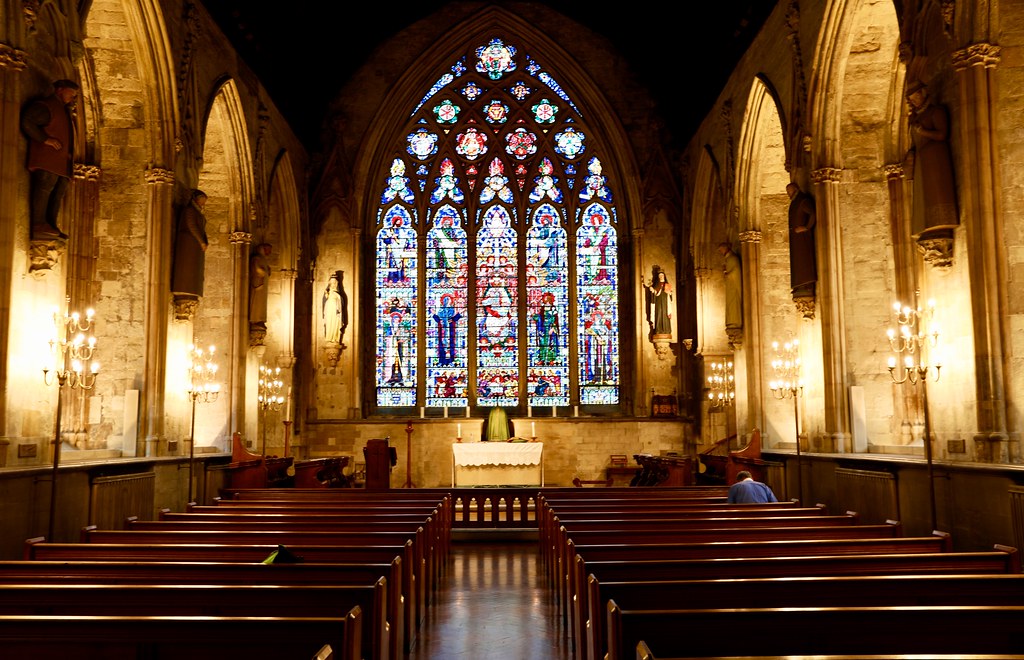
14. St. Etheldreda’s Chapel
St. Etheldreda’s is England’s oldest Catholic Church. Dating from the 13th century, the church is a survivor, having withstood the Reformation, the Great Fire, and the bombing of WWII.
Built during the reign of Edward I, the chapel was originally the residence of the Bishop of Ely. It was dedicated to St. Etheldreda, an abbess and saint who was the English equivalent of the Virgin Mary herself.
It has an airy light-filled nave and some gorgeous stained glass windows. The church also has a vaulted crypt set upon an ancient Roman pavement with dark medieval beams.
It was at St. Etheldreda’s that Shakespeare has John Gaunt making one of the finest speeches in the English language, the oration in Richard II (“This royal throne of kings, this scepter’d isle …).
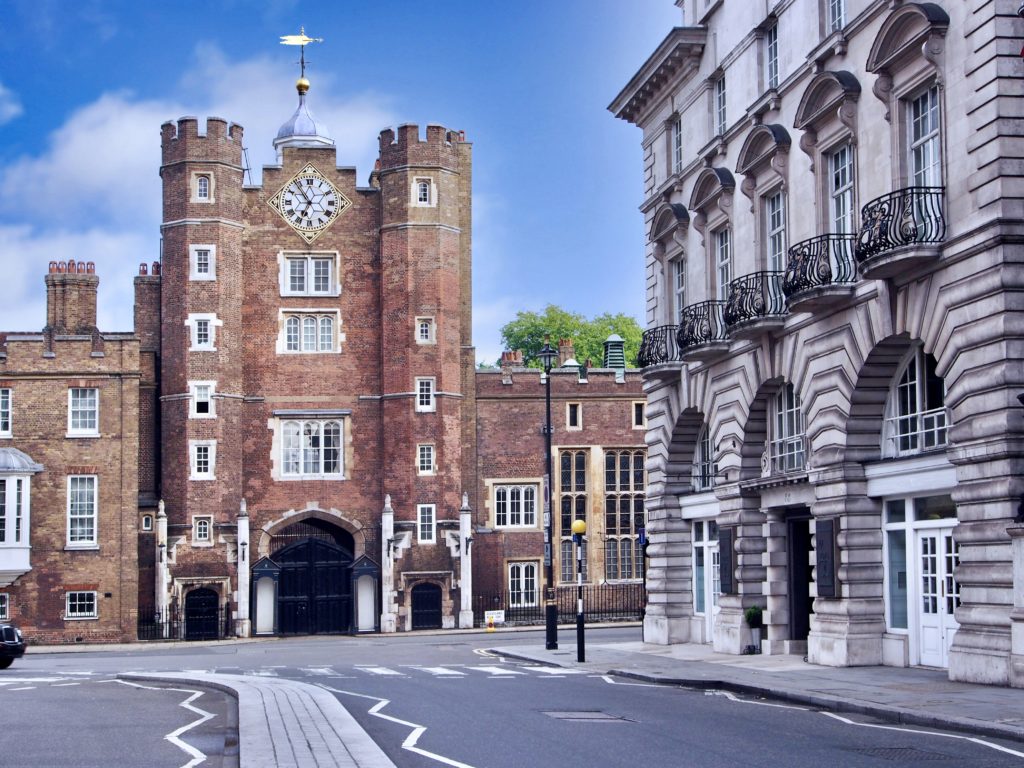
15. St. James Palace
Henry VIII built St. James Palace on the site of a hospital he confiscated. He intended it to be a manor home for his second wife Anne Boleyn. She never lived to see the palace, after being executed on the Tower Green.
There’s little left of the Tudor palace today, as parts were destroyed by fire. The imposing red brick gatehouse is original, and typically guarded by red- coated sentries.
Henry VIII built the Chapel Royal in honor of his fourth wife Anne of Cleves. The exterior and its mullioned windows are authentically Tudor. Inside, there’s also an original ceiling designed by Hans Holbein in the 1540s.
The palace is only rarely open to the public on special occasions. So, unless you are lucky, you will have to admire it from outside. You can also attend a service in the Chapel Royal.
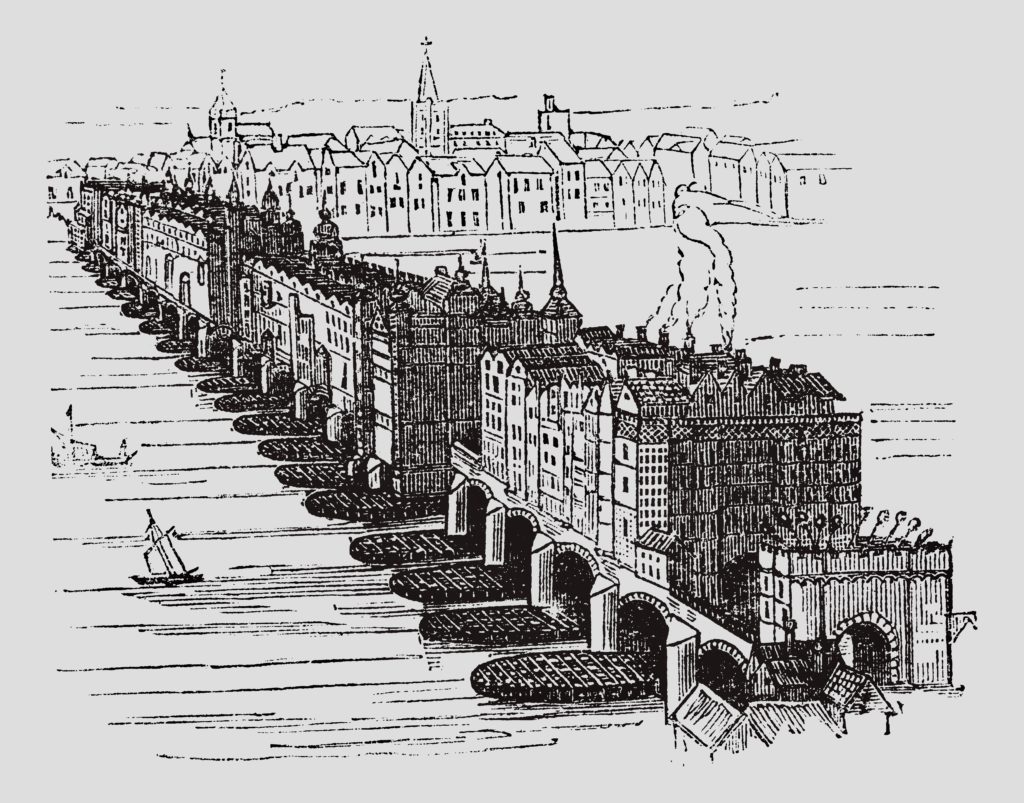
16. London Bridge | St. Magnus-the-Martyr
The history of the London Bridge is as old as the history of London. The first bridge was built by the Romans. The ancient wooden structure burned and was rebuilt many times.
Construction of a new bridge began in 1209. It was a noble structure with 19 arches, connecting the city with the south bank. It was filled, chockablock, with wooden buildings that formed a little village.
The 600 year old medieval bridge was razed in 1831 and replaced with a fanciful incarnation. That was deconstructed and rebuilt in the U.S. Now, there’s a very nondescript modern London Bridge.
The small church of St Magnus-the-Martyr on Lower Thames Street is located just next to the new bridge. However, it also sits atop the site of the medieval bridge.
The pedestrian entrance to the old bridge can still be seen, built into the church’s tower, which is marked with a plaque. The church’s courtyard also contains stones from the medieval bridge. Inside, visitors can find an incredibly detailed, 13 foot long model of the medieval bridge.
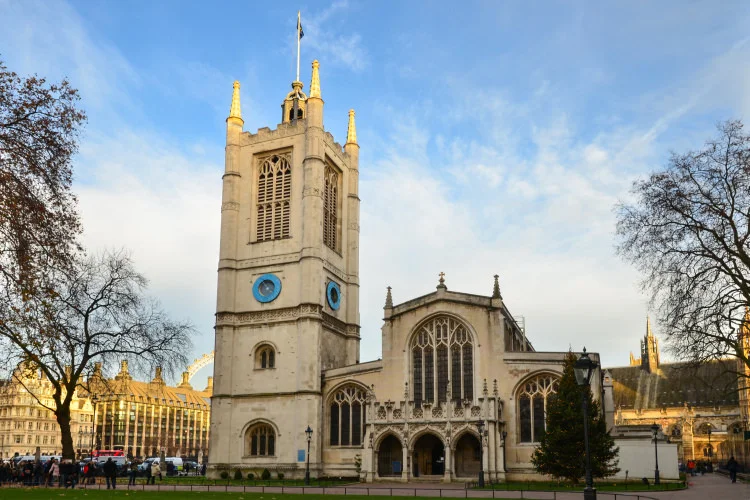
17. St. Margaret’s Church
The charming St. Margaret’s Church is located just north of Westminster Abbey in Parliament Square. The current Gothic-style building was consecrated in 1523 during the reign of Henry VII. Elizabeth I made it one of the country’s “Royal Peculiars.”
Its most notable feature is a dazzling Tudor window from 1509. It commemorates the betrothal of Prince Arthur (Henry VIII’s brother) to Catherine of Aragon (who would become Henry’s first wife when Arthur died).
By the time the window was commissioned and arrived, Arthur was dead, his brother was king, and Catherine was queen.
Former prime ministers Sir Winston Churchill and Harold Macmillan were also married in the church.
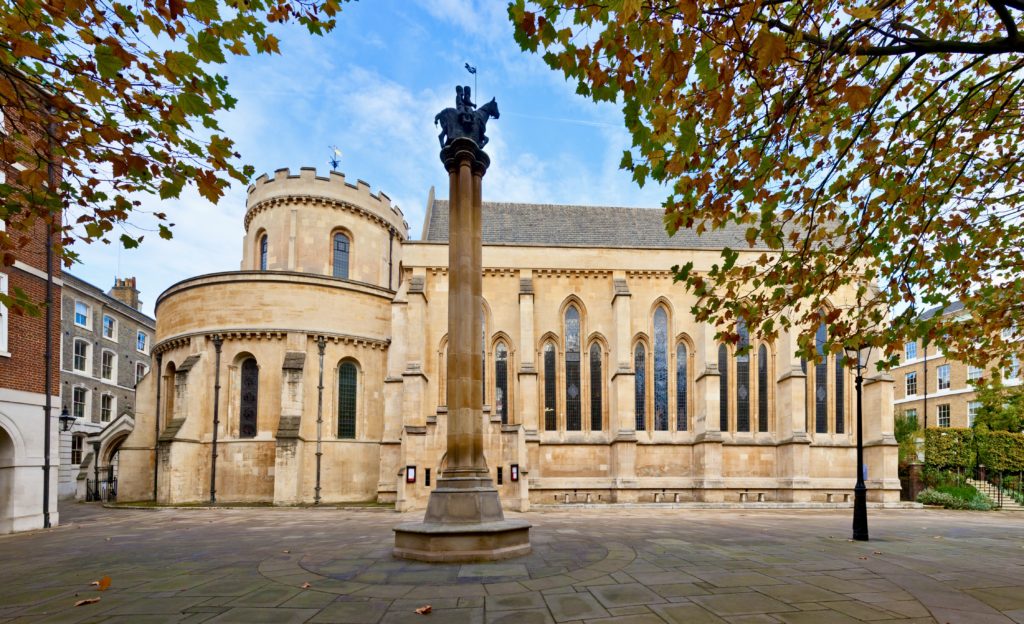
18. Temple Church
Temple Church dates from the late 12th century. It’s one of Medieval London’s most rewarding stops.
Temple Church is the oldest surviving circular church in England. Like Westminster Abbey, it’s classified as a “Royal Peculiar,” a house of worship that answers only to the reigning monarch.
The church was built by the secretive Knights Templar, an order of crusading monks founded to protect pilgrims traveling to and from Jerusalem.
Temple Church is in two parts: the Round church (consecrated in 1185) and the oblong Chancel (built in 1240), the latter of which is the heart of the modern church.
The church boasts a wealth of funereal tombs and monuments, including effigies of nine armored knights. The north window has images of kings Henry I and Stephen. The south window depicts Henry I and Henry III.
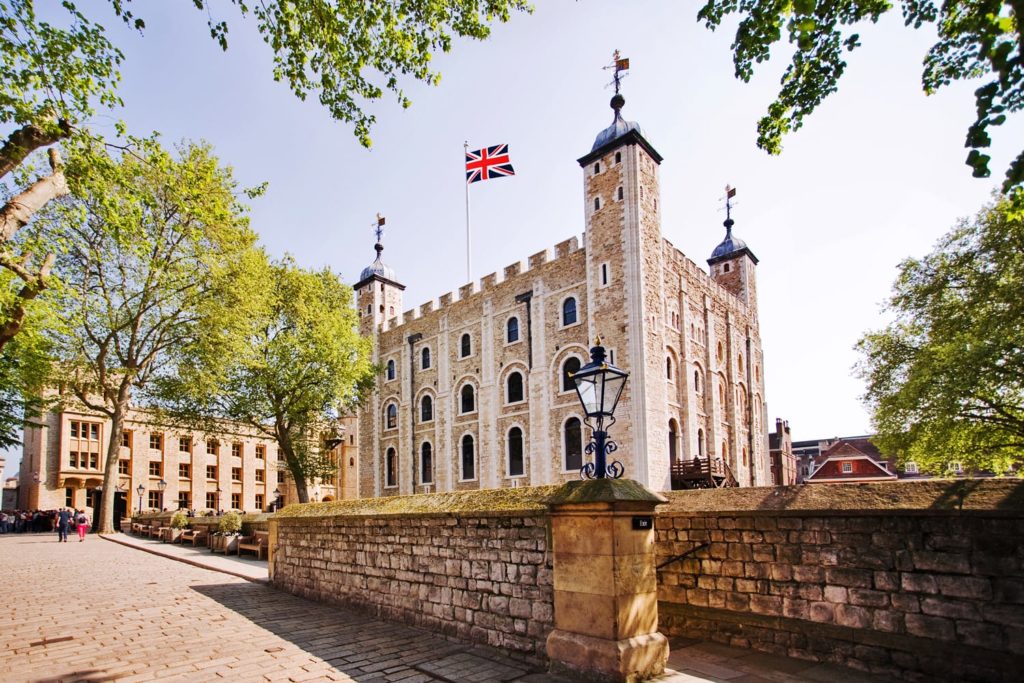
19. Tower of London
The Tower of London is the top medieval attraction in London. For over a 1,000 years, the tower has been a focal point of the London landscape.
For nearly 5 centuries, it was the primary residence of the reigning monarch. It’s been the scene of famous (and infamous!) events in English history.
A simple fort was built on the site after the Conqueror was crowned king in 1066. Construction of the White Tower, the great central keep, began in 1078.
Over the centuries, Henry III and Edward I expanded William’s fortress and made it more luxurious. They added huge curtain walls with a series of towers and enlarged the moat.
In the reign of Henry VII’s infamous son, Henry VIII, the Tower became notorious as a prison for those who fell out of Henry’s favor. He sent Cardinal Wolsey, Thomas More, Thomas Cromwell, and two wives to the gallows on the Tower Green with little or no “evidence” of crimes.
Unlike Henry VIII, his daughter, Elizabeth I, hated the tower. No wonder, since her mother Anne Boleyn lost her head there.
When you walk over the moat and under the portcullis of the Byward Tower, you are stepping back in time. For a detailed description of everything to see inside, check out my guide to the Tower of London.
In high season, you must purchase a ticket online in advance or be resigned to wait for hours in line.
For a more in depth experience, you may want to book a tour with an expert. I’ve taken this 3 hour guided tour and it was excellent. You can also check out this private tour or this 3 hour early access tour.
Just outside the Tower of London sits Tower Hill, a public space that was the location for over 100 executions in Medieval and Tudor London.
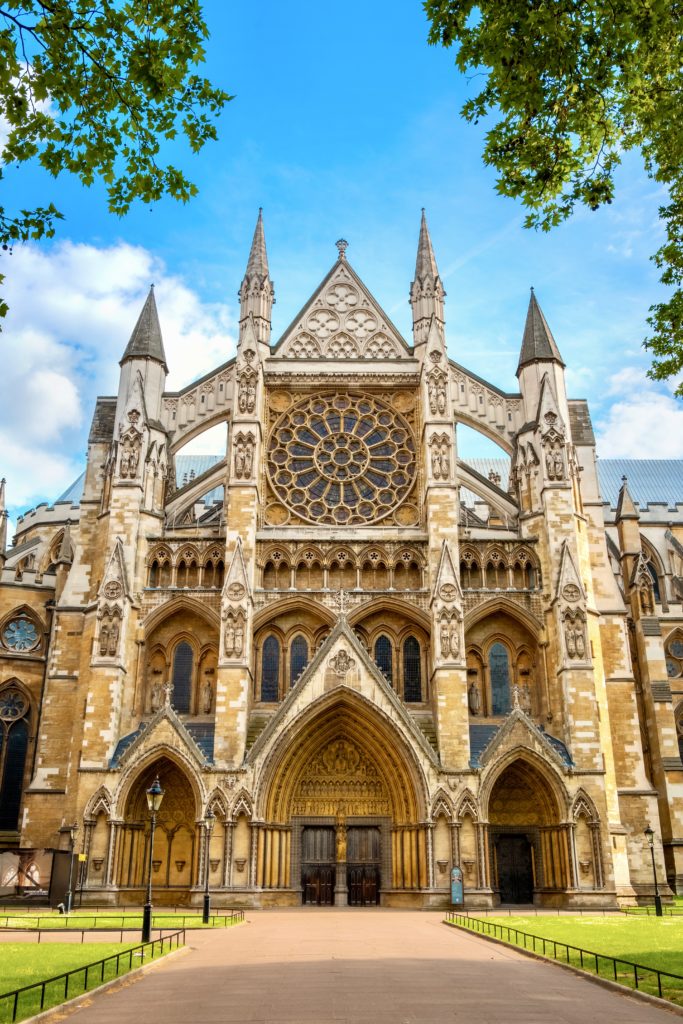
20. Westminster Abbey
Founded by Edward the Confessor, Westminster Abbey embodies Medieval London. It’s a UNESCO-listed Gothic wonder. The complex has been an abbey, a cathedral, a coronation church, and a royal mausoleum.
This spectacular medieval “Royal Peculiar” has hosted every coronation from William the Conqueror to Elizabeth II and 16 royal weddings.
It’s also the burial place of many medieval royals, including feuding Tudor siblings Elizabeth I and Mary. In the Poet’s Corner, you can pay homage to Geoffrey Chaucer, Ben Johnson, and a monument to Shakespeare.
The stunning Henry VII Chapel is the last great masterpiece of English medieval architecture. It’s the work of Henry VII. He was a famously parsimonious king, but broke the bank on his namesake chapel.
The chapel is where you’ll find the tombs of most of medieval history’s famous heroines, villains, and traitors — Henry VII and his wife Elizabeth of York, Mary Queen of Scots, Mary I, Elizabeth I, Edward VI, Lady Margaret Beaufort, etc.
A highlight is the spectacular fan vaulted ceiling and carved pendants
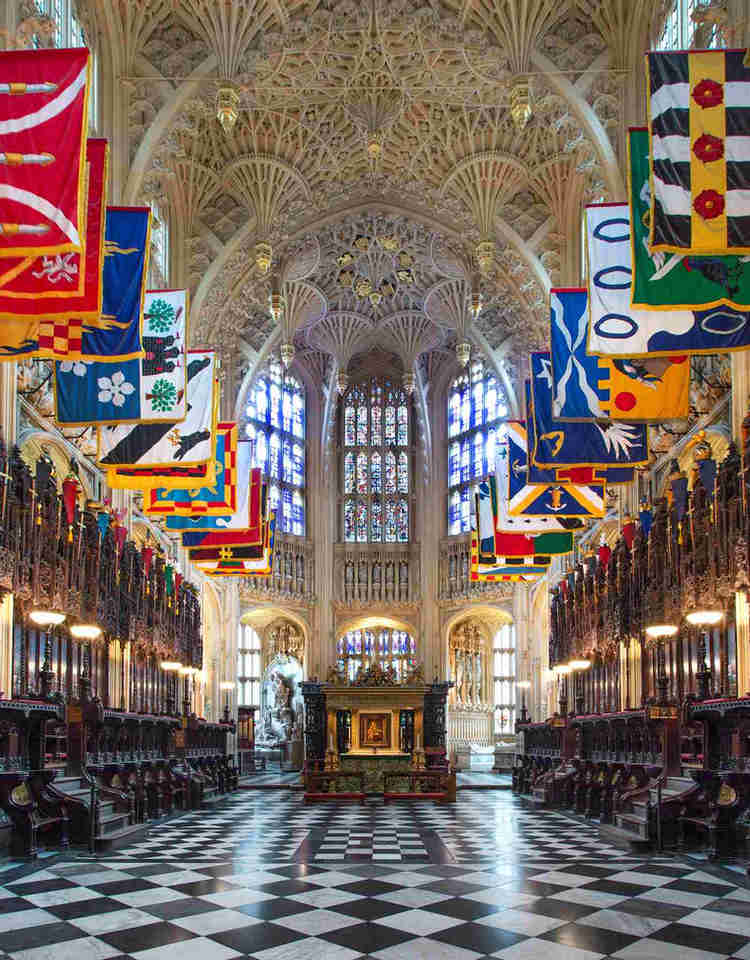
If you’re a Richard III enthusiast, you can also check out the monument to two “Princes in the Tower.”
On 1647, two skeletons were discovered in the Tower London. Charles II immediately proclaimed they were the missing princes without any scientific analysis. We’ll never know if this is true unless the crown permits DNA testing.
In Westminster’s medieval cloisters, you can visit the Chapter House with its original medieval flooring and the Pyx Chamber with the oldest altar in the abbey.
For more information on everything to see at the abbey, here’s my complete guide to visiting Westminster Abbey.
You should definitely book a skip the line ticket to visit the abbey. For the full historical scoop, you may also want to 2 hour guided tour of the abbey.
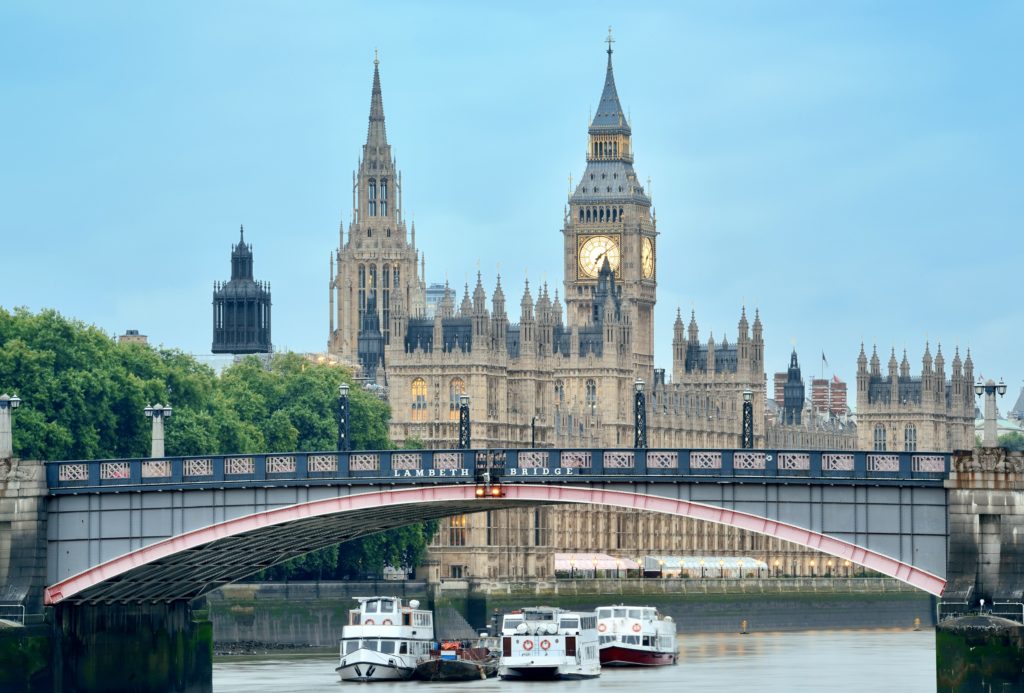
21. Westminster Palace
The Palace of Westminster serves as the meeting place for both the House of Commons and the House of Lords. It’s informally known as the “Houses of Parliament.”
If the Tower of London was the realm’s symbol of military might, Westminster Palace was the symbol of the monarch’s iron control.
In Medieval London, this was where the king’s council met, where parliament assembled when called by the king, and where trials were held. It was also the site of celebratory banquets, usually held around the holidays.
Unfortunately, most of the medieval palace was destroyed by a fire in 1834. All that remains is Westminster Hall, the cloisters of St. Stephen’s Chapel (not open to the public), and the Jewel Tower.
On an official tour, you’ll enter through the Victoria Tower. You will see the monarch’s robing room, several antechambers, the Royal Gallery and the House of Lords. (I’ve actually been there as a guest of a lord!)
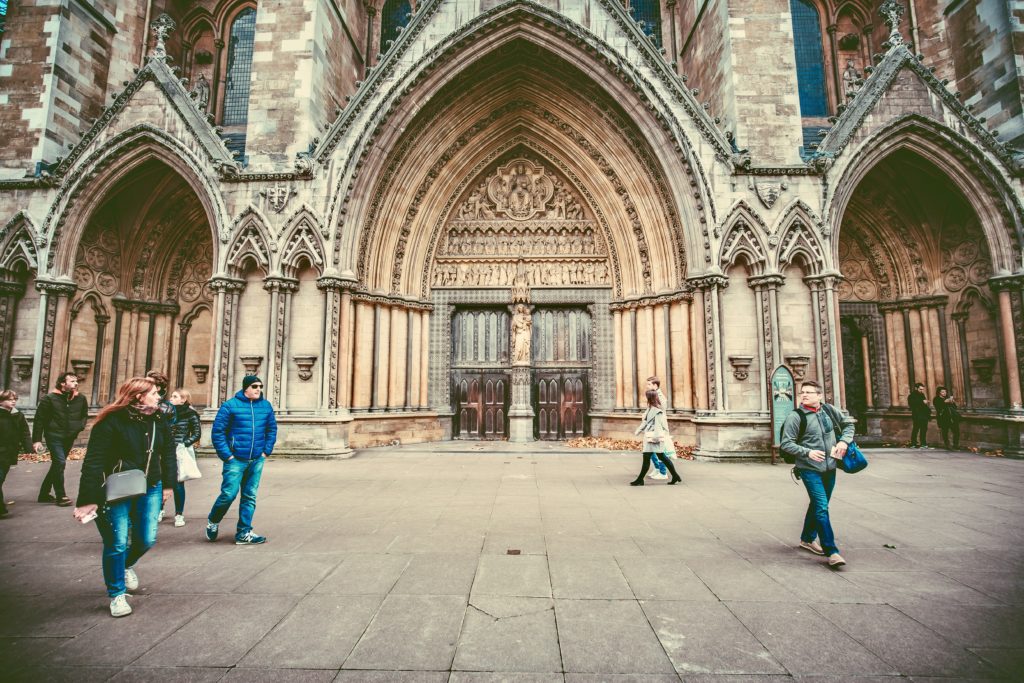
Your next stop is the medieval hall, which was built by William Rufus between 1097-99. Richard II renovated the hall, adding a hammerbeam roof and intricate carvings featuring royal coats of arms.
You can also admire six stone statues of kings from 1388. Richard II commissioned them and they are assumed to represent the kings who preceded him.
The public can only tour the Houses of Parliament on certain dates. Or, you can book a guided tour of both Parliament and Westminster Abbey.
Just across the street is the Jewel Tower. It’s a three story moated tower built as a giant safe for Edward III. Though it was once stuffed with gold and treasures, it now houses a small museum with relics from the old palace.
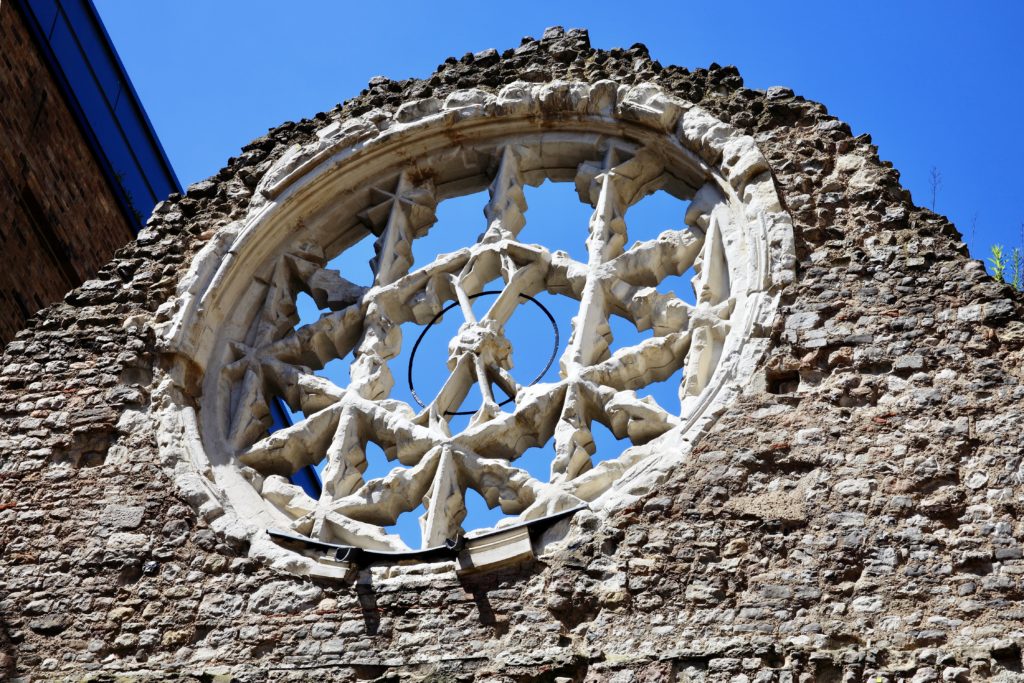
22. Winchester Palace
Winchester Palace was once one of the largest and most important buildings in all of Medieval London.
Winchester was built in the early 13th century as a home for the powerful Bishops of Winchester. They were a group of medieval power players for half a century.
The palace was used as a meeting place between church and state. It’s said that this is where Henry VIII met his fifth wife, Catherine Howard.
In 1642, the palace was reincarnated as a prison, and continued to decline. In 1814, what remained was mostly destroyed by fire.
Today, visitors can see the ruins of the walls of the Great Hall, including a magnificent oriel rose window that adorns the west gable.
I hope you’ve my guide to Medieval London. You may enjoy these other England travel guides and resources:
- 3 Day Itinerary for London
- 5 Day Itinerary for London
- Hidden Gems in London
- 30 Day Trips from London
- Tourist Traps To Avoid in London
- Best Castles in England
- Best Museums in London
- One Day In Canterbury Itinerary
- One Day in Oxford Itinerary
- One Day In Stratford-upon-Avon
- Harry Potter Places in London
If you’d like to visit Medieval London, pin it for later.

